Occupational environment monitoring at a hearing aid manufacturing factory
99,000 ₫
Note: The above price is calculated for one sample, and the price may fluctuate depending on the area of the environment to be monitored and market movements. For more accurate pricing support, please refer to the price list or contact our consulting staff directly.
Monitoring the environment of a hearing aid production factory is a session of collecting, analyzing, and evaluating workplace factors that may be harmful to workers’ health.
Table of Contents
Toggle1. Overview of Hearing Aid Manufacturing Plants
a. What is a hearing aid manufacturing plant?
A factory that manufactures hearing aids is a facility specialized in producing and assembling hearing aid devices. A hearing aid is a small electronic device worn in the ear to help individuals with hearing impairments hear more clearly. Hearing aid manufacturing plants typically employ specialized production technologies and processes to create various types of hearing aids, from basic devices to advanced, high-tech products.
During the hearing aid production process, the factory usually carries out multiple stages including machining, assembly, quality control, and product packaging. The components of hearing aids are manufactured and assembled according to technical procedures, and then tested to ensure quality and optimal performance before packaging and delivery to customers.
Hearing aid manufacturing plants commonly use modern machinery, equipment, and technologies to carry out production stages. This includes CNC lathes, metalworking machines, electronic soldering and pressing machines, testing and measuring devices, and quality control equipment. These machines are used to process and assemble components, check the performance and sensitivity of hearing aids, and ensure compliance with relevant standards and regulations.

b. Production stages in hearing aid manufacturing plants
The production process in a hearing aid manufacturing plant may include the following stages:
- Design and research: The plant has a professional design team to develop and research new models and technologies for hearing aids. This stage includes designing components, microchips, and control programs for hearing aids.
- Component manufacturing: The plant produces necessary components for hearing aids, including microchips, speakers, batteries, microphones, sensors, and other parts. Component production may involve machining, printed circuit boards, molding, and other precision manufacturing technologies.
- Assembly and testing: Manufactured components are assembled into the final product. This stage includes attaching components to the hearing aid casing, installing batteries, and configuring functions and settings. Hearing aids are then tested to ensure quality, performance, and proper operation according to specifications.
- Packaging and shipping: After passing quality control, hearing aids are packaged to protect them and ensure safe transport to retail points or distributors. Packaging may include boxes, moisture-proof bags, instruction manuals, and protective materials.
- Maintenance and after-sales service: Some plants also provide maintenance and repair services for hearing aids. Staff will check and repair damaged devices or assist customers in installation and use.

c. Machinery used in hearing aid manufacturing plants
In hearing aid manufacturing plants, various machinery and equipment are used for production and quality control. Common types of machinery include:
- Molding machines: Used to produce plastic components of hearing aids through molding processes.
- CNC machining machines: Precision machines using CNC (Computer Numerical Control) technology to process metal parts of hearing aids.
- Automated assembly machines: Used to automatically assemble components such as microchips, speakers, batteries, microphones, and other parts into complete products.
- Soldering machines: Used to solder metal joints during assembly.
- Quality testing machines: Used to check functions, performance, and sound quality of hearing aids before packaging and shipment.
- 3D printers: Used to print small plastic or metal parts with high precision.
- Sound measurement devices: Used to measure and test technical audio parameters of hearing aids, such as sensitivity, frequency response, and distortion.
- Packaging machines: Used to package and format the final product, including boxes, moisture-proof bags, and labels.

d. Occupational diseases that workers in hearing aid manufacturing plants may face
Workers in hearing aid manufacturing plants may suffer from certain occupational diseases common in industrial work environments. Some occupational diseases frequently encountered in the hearing aid manufacturing industry include:
- Hearing loss: Noise from production and testing of hearing aids can cause hearing loss for employees working in loud environments for prolonged periods.
- Respiratory issues: Chemicals, dust, and other emissions from the manufacturing process can cause respiratory problems such as chemical pneumonia, asthma, and allergy-related conditions.
- Skin problems: Exposure to cleaning agents, solvents, and other chemicals may result in dermatitis, skin irritation, or other skin conditions for workers.
- Physical injuries: While operating machinery and equipment, employees may face risks of injury from impacts, cuts, punctures, and other accidents.
To ensure safety and protect workers’ health, occupational safety measures and adherence to safety regulations must be applied in hearing aid manufacturing plants. This includes using personal protective equipment, ensuring proper ventilation, controlling noise levels, managing waste, and implementing other risk control measures.

e. Popular types of hearing aids on the market
There are many popular types of hearing aids designed to help users overcome hearing difficulties. Some common types include:
- In-ear (ITE) hearing aids: Designed to fit snugly inside the ear. They are relatively compact and suitable for users with varying levels of hearing loss.
- Behind-the-ear (BTE) hearing aids: Positioned behind the ear and connected by a sound tube. Suitable for users with mild to severe hearing loss.
- In-the-canal (ITC) hearing aids: Smaller than ITE hearing aids and placed inside the ear canal. Suitable for users with mild to moderate hearing loss.
- Completely-in-canal (CIC) hearing aids: The smallest type, placed deep inside the ear and less visible. Suitable for users with mild to moderate hearing loss.
- Wireless hearing aids: Use wireless technology to transmit audio signals from the source to the hearing aid, allowing remote control and connectivity with smart devices.
2. Overview of Occupational Environment Monitoring Services
a. What is occupational environment monitoring in hearing aid manufacturing plants?
Occupational environment monitoring (or labor environment measurement) in hearing aid manufacturing plants involves collecting, evaluating, and analyzing measured indicators of workplace environmental factors. This ensures timely interventions to minimize environmental harm to workers’ health and prevent occupational diseases. Occupational environment monitoring is mandatory for hearing aid manufacturing plants.
Monitoring plays a crucial role in caring for, protecting, and enhancing workers’ health, as the workforce is the primary resource of a company and directly generates profit. Workers regularly exposed to hazardous factors exceeding permissible limits may suffer health consequences and occupational diseases.
REGISTER FOR OCCUPATIONAL ENVIRONMENT MONITORING SERVICE
b. Nam Viet’s occupational environment monitoring program
Nam Viet’s occupational environment monitoring program is developed by engineers specializing in labor safety and environmental protection. Aiming to ensure health and safety for workers, the program uses modern measurement methods to monitor air quality, water, microclimate, physical factors, dust, and more in the work environment. This program is crucial for maintaining a safe working environment and protecting worker health.
Additionally, Nam Viet’s program contributes to research and development of new solutions to improve workplace environmental quality. With the dedication and professionalism of its monitoring experts, Nam Viet’s exclusive program represents a breakthrough in labor safety management and environmental protection in Vietnam.

c. Standardization in occupational environment measurement procedures
Standardization in Nam Viet’s occupational environment measurement procedures is vital for ensuring the quality of measurement results. To guarantee accuracy and reliability, the program uses recognized standards and procedures from the Ho Chi Minh City Department of Health. This ensures that collected data is highly reliable for evaluating workplace environments and making informed decisions to improve working conditions and protect workers’ health.
These standardized procedures also ensure that measurements are conducted by qualified monitoring experts with years of experience, allowing managers and professionals to trust An Toàn Nam Việt’s results and make accurate, valuable decisions for health and environmental protection.
By applying standardization in measurement procedures, Nam Viet demonstrates its commitment to a safe working environment and worker health while contributing to the advancement of labor safety management and environmental protection in Vietnam.
d. Reporting results of occupational environment monitoring in hearing aid manufacturing plants
Occupational environment monitoring results are compiled according to Form 04, Appendix III issued with Decree 44/2016/ND-CP and produced in two copies: one sent to the workplace that contracted the monitoring service and one retained by the monitoring organization.
The retention period for occupational environment monitoring records is indefinite according to legal regulations.

e. Frequency of occupational environment monitoring according to the law
According to Clause 2 of Article 18 of the Law on Occupational Safety and Hygiene 84/2015/QH13, employers must conduct occupational environment monitoring to assess harmful factors at least once per year.
f. Deadline for submitting occupational environment monitoring reports according to the law
The deadline for submission is before December 31 each year. Enterprises at manufacturing facilities must submit occupational environment monitoring reports to the local Department of Health where the business is headquartered and where employees work.
When there are changes in technology, production processes, or when upgrading facilities that may introduce new hazards to workers’ health, enterprises must update occupational hygiene records regarding harmful factors and conduct monitoring.
g. Penalties for violations of occupational environment monitoring regulations for employers
According to Article 27 of Decree No. 12/2022/ND-CP dated January 17, 2022, on administrative penalties in labor, social insurance, and Vietnamese workers working abroad under contracts:
- Clause 2: Fines from 2,000,000 to 5,000,000 VND for employers who fail to publicly disclose monitoring results to employees at the monitored site and at places where hazardous factors are assessed and managed immediately after results are obtained.
- Clause 3: Fines from 20,000,000 to 40,000,000 VND for employers who fail to carry out occupational environment monitoring to control health risks as required by law.
- Clause 4: Fines from 40,000,000 to 60,000,000 VND for employers who collude with monitoring organizations to commit fraud in monitoring activities but without criminal liability.
3. Harmful Environmental Factors for Workers in Hearing Aid Factories
In hearing aid factories, there are several environmental factors that may be harmful to workers. Below are some potential environmental hazards:
- Noise: During hearing aid production, machinery and equipment may generate significant noise. Continuous and high-intensity noise can affect workers’ hearing.
- Chemicals: The production process may involve chemicals such as solvents, adhesives, cleaning agents, and preservatives. Exposure to these chemicals can cause skin, eye, or respiratory irritation, and in some cases may harm health if proper personal protective measures are not followed.
- Dust and fine particles: The machining and production processes can produce dust and fine particles. Long-term exposure can lead to rhinitis, pharyngitis, or other respiratory problems.
- Lighting: During inspection, assembly, and quality control, workers may need to work under strong lighting. Prolonged exposure to intense or glaring light can cause eye strain, fatigue, and affect vision health.
- Temperature and humidity: Some production processes may require specific temperature and humidity conditions. Working in excessively hot, cold, or humid environments can affect health and worker comfort.
REGISTER FOR OCCUPATIONAL ENVIRONMENT MONITORING SERVICE
4. Measures to Improve the Working Environment in Hearing Aid Factories
To improve the working environment in hearing aid factories and protect workers’ health, the following measures can be applied:
- Noise control: Use soundproofing, insulation, and hearing protection to reduce factory noise. Ensure workers are provided with personal hearing protection such as noise-canceling earphones.
- Chemical management: Apply safety measures when using chemicals, such as wearing personal protective equipment, using effective ventilation systems, and ensuring safe and proper operating procedures.
- Dust and fine particle management: Use dust extraction systems, ensure good ventilation, and provide respiratory protection to prevent direct exposure to dust and fine particles.
- Lighting adjustment: Provide adequate natural light and appropriate artificial lighting to reduce eye strain and ensure a comfortable working environment.
- Temperature and humidity control: Ensure temperature and humidity are within a comfortable range for workers. Use air conditioning, manage humidity, and provide rest areas if necessary.
- Training and guidance: Provide training and guidance to workers on using personal protective equipment, preventing hazards, and other safety measures in the workplace.
- Regular inspection and maintenance: Conduct periodic inspections and maintenance of machinery, equipment, ventilation systems, and other safety devices to ensure stable and safe operation.
- Regularly conduct occupational environment monitoring in the factory, collect and analyze harmful factors affecting workers, and implement adjustments to reduce hazards and prevent occupational diseases.
5. Benefits of Periodic Hearing Aid Factory Environment Monitoring
An Toan Nam Viet provides businesses with excellent benefits when using occupational environment monitoring services according to Decree 44/2016/NĐ – CP on the management and control of harmful factors in the working environment affecting workers.
- Businesses can proactively control harmful factors in workshops or factories.
- Receive recommendations to reduce harmful factors and improve workplace environmental quality.
- Indirectly protect human resources, the key factor in business development.
- Reduce the impact of occupational diseases on workers’ health, minimizing future medical costs.
- Improved worker health leads to better product quality and ensures consistent production output.
- Comply with labor safety regulations and avoid legal risks.
- Enhance credibility and professionalism, elevating the company’s brand.
An Toan Nam Viet’s environment monitoring service is a solution to reduce occupational disease risks, contributing to a clean and high-quality working environment.

6. Nationwide Occupational Environment Monitoring Center
An Toan Nam Viet Occupational Environment Monitoring Center is a professional unit for supervising and measuring occupational environment quality across all provinces in Vietnam. With experienced monitoring specialists, the center uses modern measuring equipment to ensure accuracy and reliability.
In addition to monitoring services, the center supports clients in planning, handling, and tracking occupational environment issues. With the motto “customer-centric,” the center prioritizes customer satisfaction and provides optimal solutions for businesses.
REGISTER FOR OCCUPATIONAL ENVIRONMENT MONITORING SERVICE
With investments in technology, equipment, and workforce, An Toan Nam Viet’s monitoring center has become a reputable unit in occupational environment monitoring in Ho Chi Minh City with the following objectives:
- We value our brand reputation and service quality.
- We provide clients with the best and most suitable solutions.
- Alongside experienced Masters and Engineers, aiming to protect the environment and benefit businesses.
- Clients using An Toan Nam Viet monitoring services receive professional support from experts and the best cost advantages.
The occupational environment monitoring process at An Toan Nam Viet includes the following steps:
- Before monitoring, ensure all equipment is calibrated according to legal regulations.
- Follow the committed occupational environment monitoring procedures with the Department of Health.
- Report monitoring results truthfully to employers.
- If results indicate unsafe conditions, An Toan Nam Viet will support remediation measures and the workplace will:
- Implement measures to improve working conditions, minimizing harmful factor exposure and preventing occupational diseases.
- Organize health check-ups to detect occupational diseases early for workers in unsafe positions.
- Provide material compensation to workers according to labor law regulations.

7. Occupational Environment Monitoring Pricing
To help businesses conduct professional and effective occupational environment monitoring, An Toan Nam Viet provides a detailed price list for monitoring services with quality and reasonable costs.
- Our price list provides detailed information on all monitoring services offered, including costs for travel, measurement, analysis, and reporting. Clients can trust the accuracy and reliability of our monitoring reports.
- We commit to offering competitive and reasonable prices, while providing fast and professional consultation for all monitoring service inquiries.
- With An Toan Nam Viet’s monitoring price list, clients can easily select service packages suitable for their needs, ensuring maximum satisfaction with professional service quality.
No comments yet

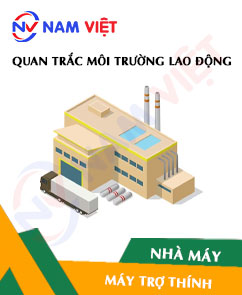
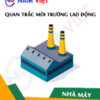
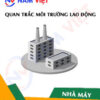

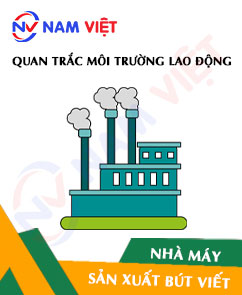


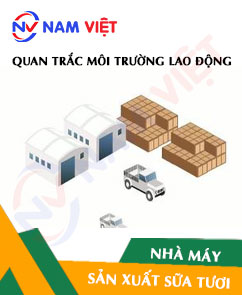



Review Occupational environment monitoring at a hearing aid manufacturing factory
There are no reviews yet.